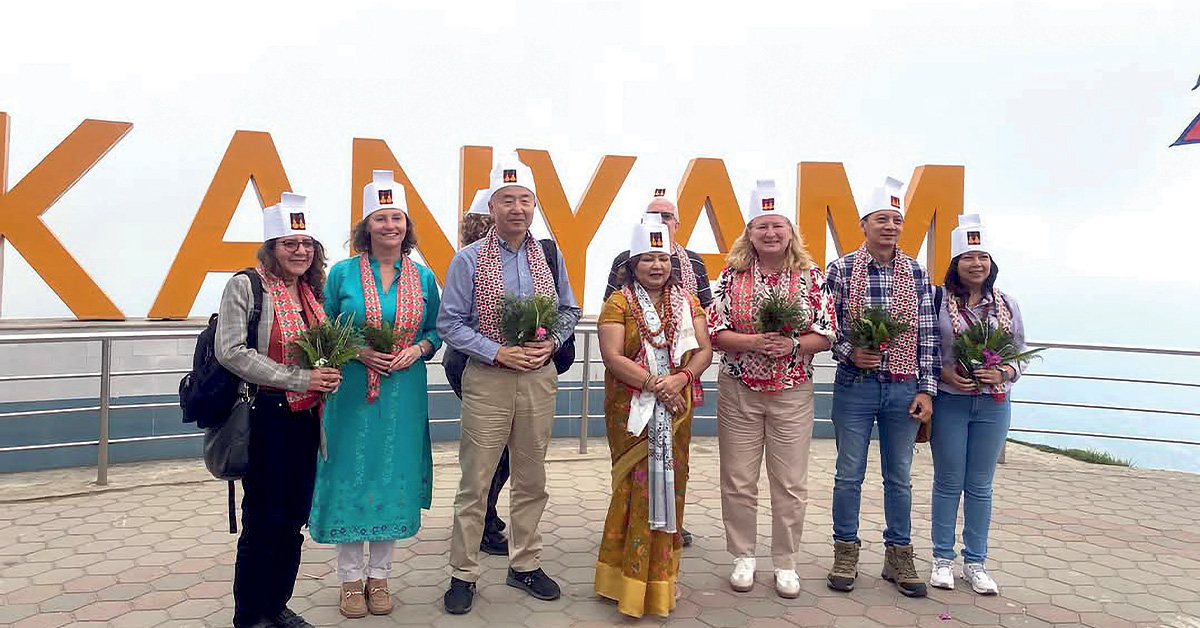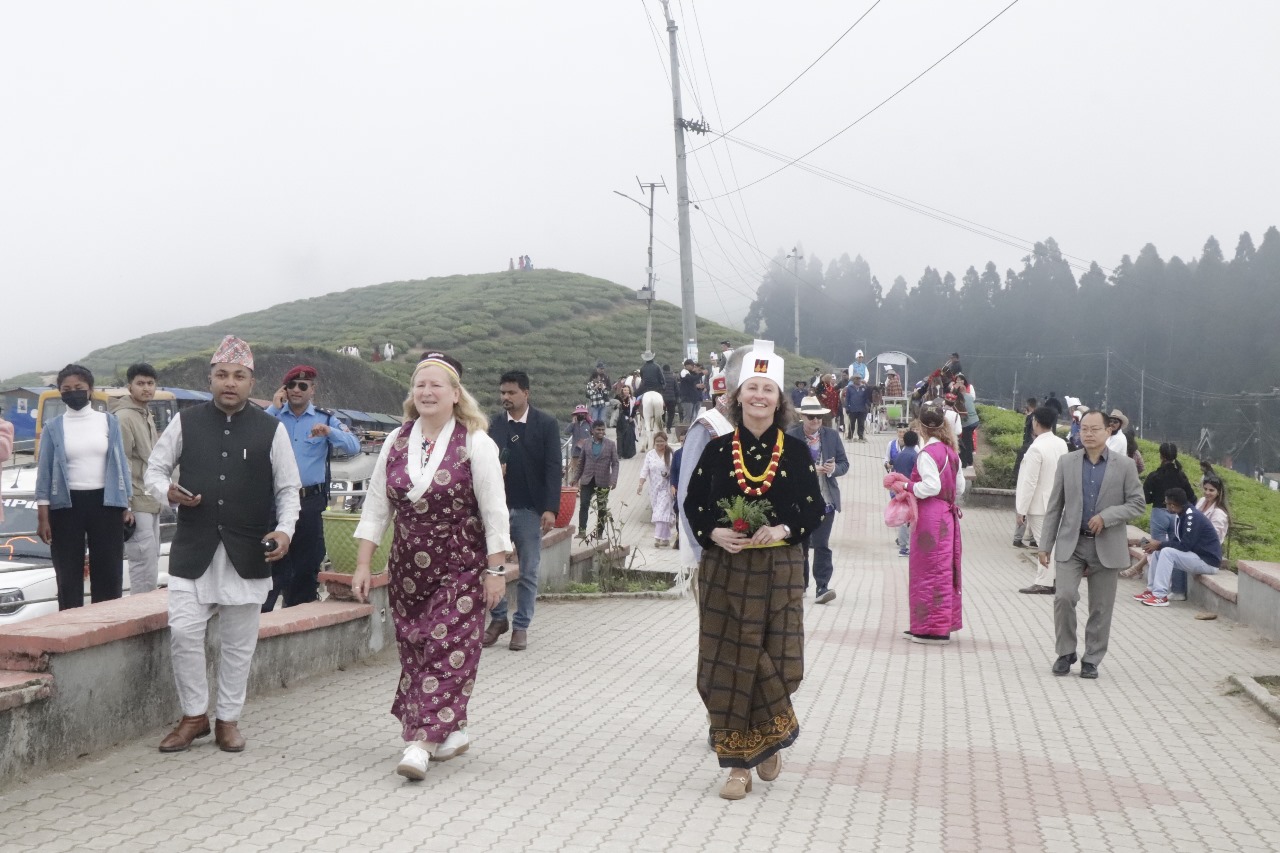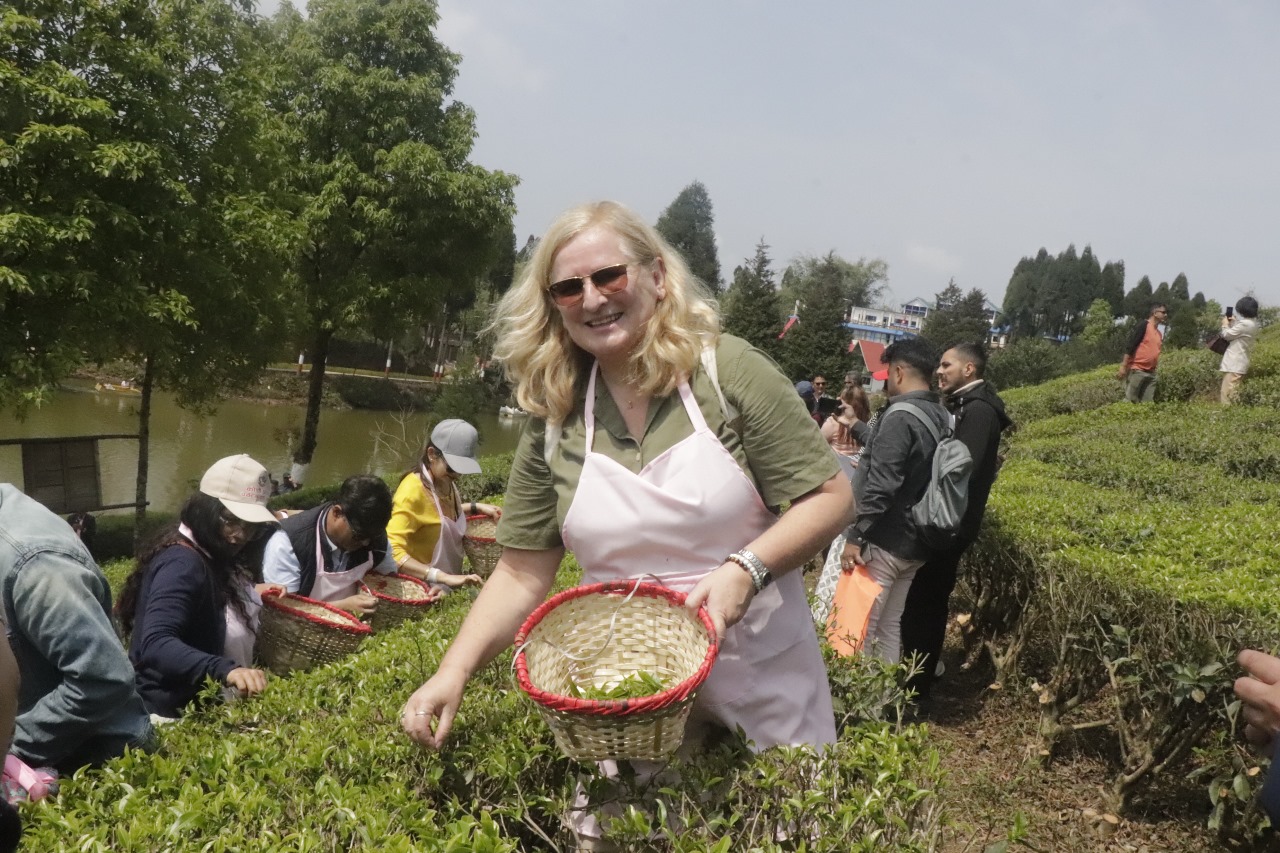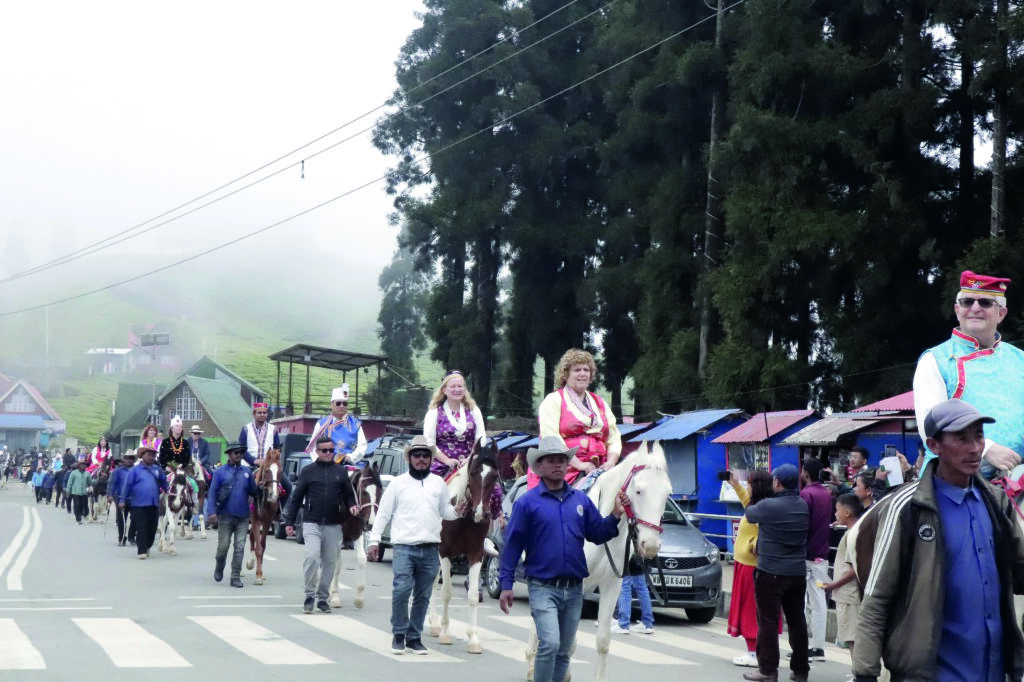

 26.14°C काठमाडौं
26.14°C काठमाडौं

Just days before the Nepali New Year, the misty hills of Ilam played host to an extraordinary gathering—not of tourists, trekkers, or traders, but of the world’s envoys. Ambassadors and diplomats representing over a dozen nations journeyed to eastern Nepal not merely to see its lush tea gardens, but to truly experience them. What awaited them in Ilam was more than scenic beauty—it was connection, culture, and the soul of a region often overlooked on diplomatic maps.
This high-level retreat, jointly organized by the Ministry of Foreign Affairs and the Nepal Tourism Board, was designed to promote Ilam as a sustainable, high-value tourism destination. However, it unfolded as something deeper: an intimate dialogue between nature and nations.
Led by Foreign Minister Hon. Dr. Arzu Rana Deuba, the delegation included Foreign Secretary Amrit Bahadur Rai, NTB CEO Deepak Raj Joshi, and ambassadors from Egypt, Japan, South Korea, France, Israel, the UK, Australia, Thailand, Bangladesh, Switzerland, Sri Lanka, and Malaysia. Also present was ICIMOD Director General Pema Gyamtso, symbolizing the region’s ecological importance.
Upon arrival at Bhadrapur Airport and during the scenic ascent to Kanyam, the tone of the visit quietly shifted. Phones turned into cameras, and the usual formality of diplomacy gave way to wonder. “I had always known Nepal as the land of majestic mountains,” said Julia Fenn, spouse of the UK ambassador. “But the green hills of Ilam touched my heart.” Her husband, Ambassador Rob Fenn, simply smiled and added, “Very beautiful.”

The warm reception by Suryodaya Municipality set the stage for what would become an immersive cultural experience. Welcoming dances, folk music, and colorful local attire offered the ambassadors their first taste of Ilam’s eighth ‘A’—Atithi Satkar (hospitality)—a perfect complement to the district’s renowned seven A’s.
Throughout the visit, delegates engaged in carefully curated activities that revealed Ilam’s ecological richness and cultural soul. From horseback rides through sprawling tea gardens to a spirited tea-leaf plucking contest (with playful debates over who plucked the most), the ambassadors weren’t just observers—they were participants.

A highlight for many was witnessing the sunrise from Shree Antu. As golden rays spilled over layers of tea gardens and distant Himalayan peaks, silence settled over the group. “We felt the serene beauty in our bones,” said Egyptian Ambassador Noha Hamdy Ahmed ElGebaly. The diplomats also fished in Antu Pokhari, savored local delicacies like bhakka and cardamom tea, and sampled herbal wine—locally known as Syal ko Raksi, now poised for global branding as “Fox Wine.”
One of the most lighthearted moments was when the Sri Lankan ambassador caught three fish in quick succession. “We are from an island—we know fish!” she laughed, echoing the easy camaraderie that defined the trip.
Though relaxed in atmosphere, the retreat was also purpose-driven. At a formal dinner in Shree Antu, Minister Deuba articulated the deeper intention: “This journey was more than a retreat—it was a chance to deepen diplomatic ties through nature and culture. Go home, share Ilam’s stories, and be Nepal’s tourism ambassadors.”
Her call was echoed by Foreign Secretary Rai, who emphasized the emotional depth of such visits. “When our friends feel Nepal—not just see it—they become true advocates.” NTB CEO Joshi added, “Ilam isn’t just a destination—it’s an experience. One that stays with you.”
Evenings were filled with music and celebration. A farewell cultural event turned into a celebration of unity, where diplomats—led by Minister Deuba herself—danced alongside locals. What began as protocol had blossomed into kinship.

Beneath the elegance and laughter, the visit carried strategic weight. As Nepal looks to diversify its tourism portfolio, Ilam stands out for its potential in eco-tourism, agri-tourism, and immersive cultural travel. The presence of ambassadors underscored growing international interest in off-the-beaten-path experiences that are authentic, sustainable, and soulfully human.
Ilam– with its rolling hills and rhythmic rains, its flavors and folklore– offered more than just beauty. It offered belonging. Many ambassadors left with heartfelt promises to return, carrying not only souvenirs but stories.
“This was not just a visit,” said Ambassador ElGebaly. “It was a feeling.”
And perhaps that’s the magic Ilam casts—not through grand monuments or luxury resorts, but through a warm cup of tea, the laughter of locals, and the soft dawn light that makes even seasoned diplomats pause.
In the words of poet Bhupi Sherchan: “I want to scatter a little bit of Ilam all across Nepal.” For those who came from afar, the sentiment now echoes back—they want to scatter Ilam across the world.